Greetings! What do backcountry snowboarding and dog ownership have in common you might ask? Both have grown increasingly popular in recent years! I’m here to share some tips for maximizing safety and stoke when venturing into the backcountry with your pup.
First, meet Lily! My beloved 5-year-old husky/shepherd mix who loves nothing more than a good romp through the snow.
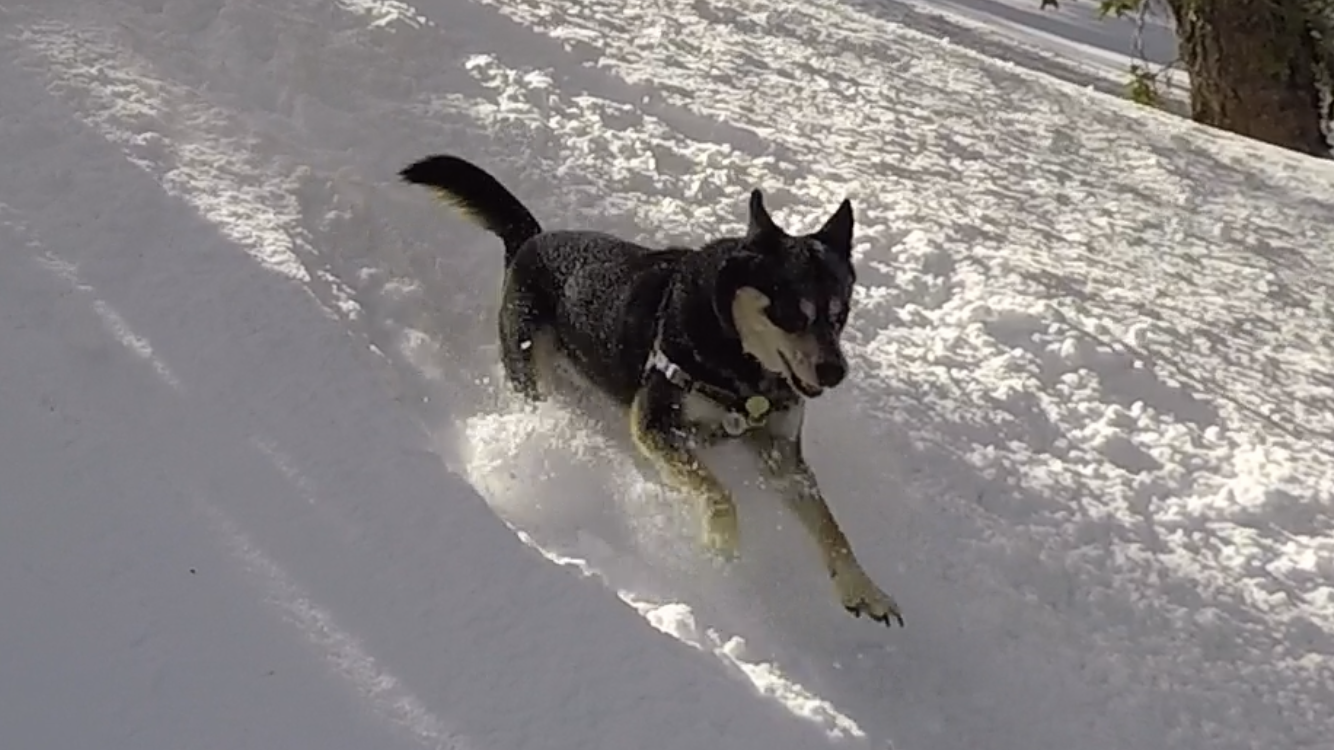
Cold Weather and Long Days
Lily’s athletic build and thick fur coat make her well-suited for snowy backcountry adventures. It’s important to make sure that your dog is able to handle cold weather and long days of strenuous exercise. Shorter-haired breeds can benefit from a doggie jacket to help them stay warm in the snow. 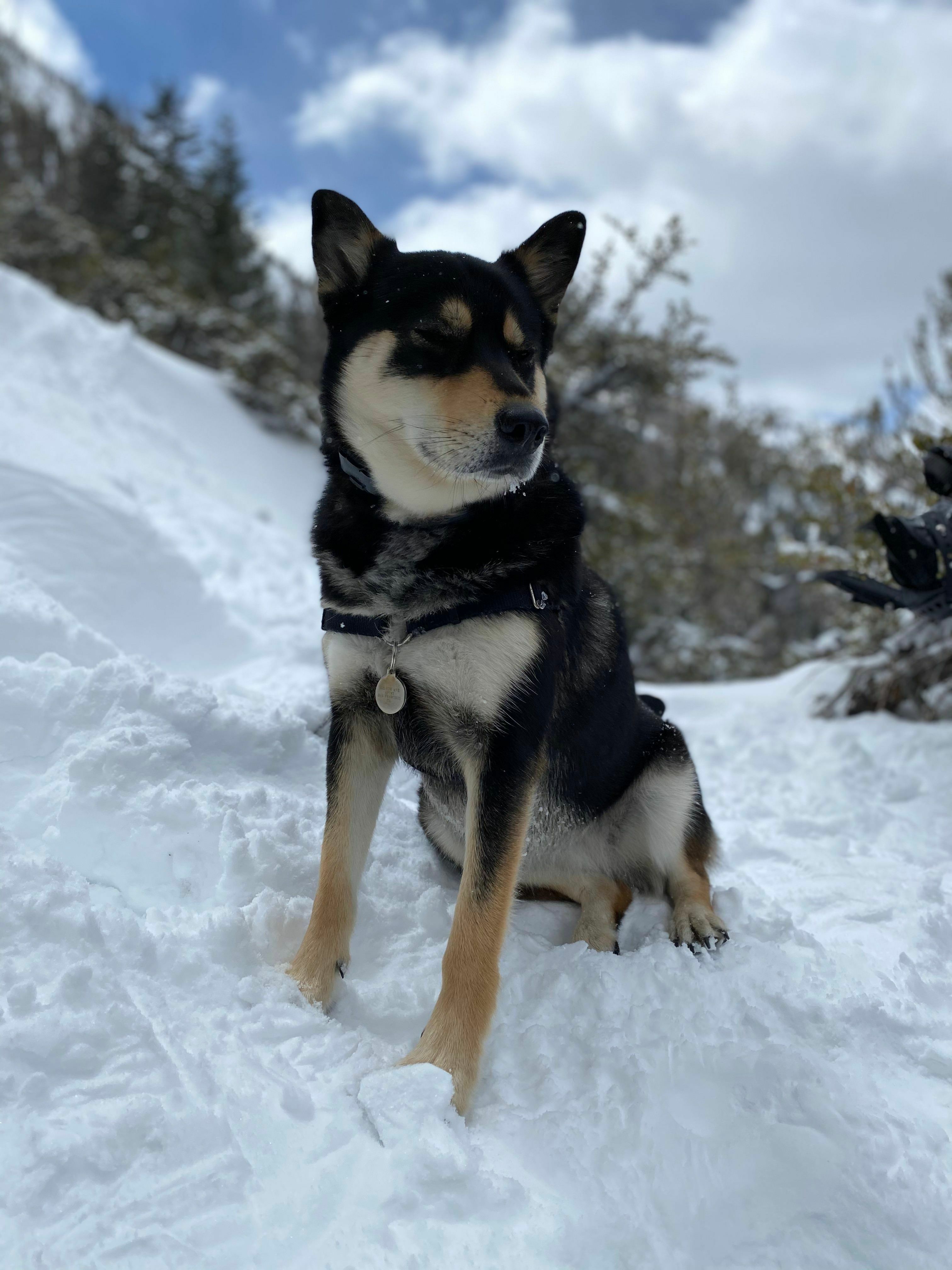
Train, train, train!
This is arguably the most important piece of advice, but it’s imperative that you’ve developed a strong bond with your dog through consistent training. Training your dog to obey voice commands and stay away from the edges of skis/snowboards is crucial to ensuring a safe day in the backcountry. 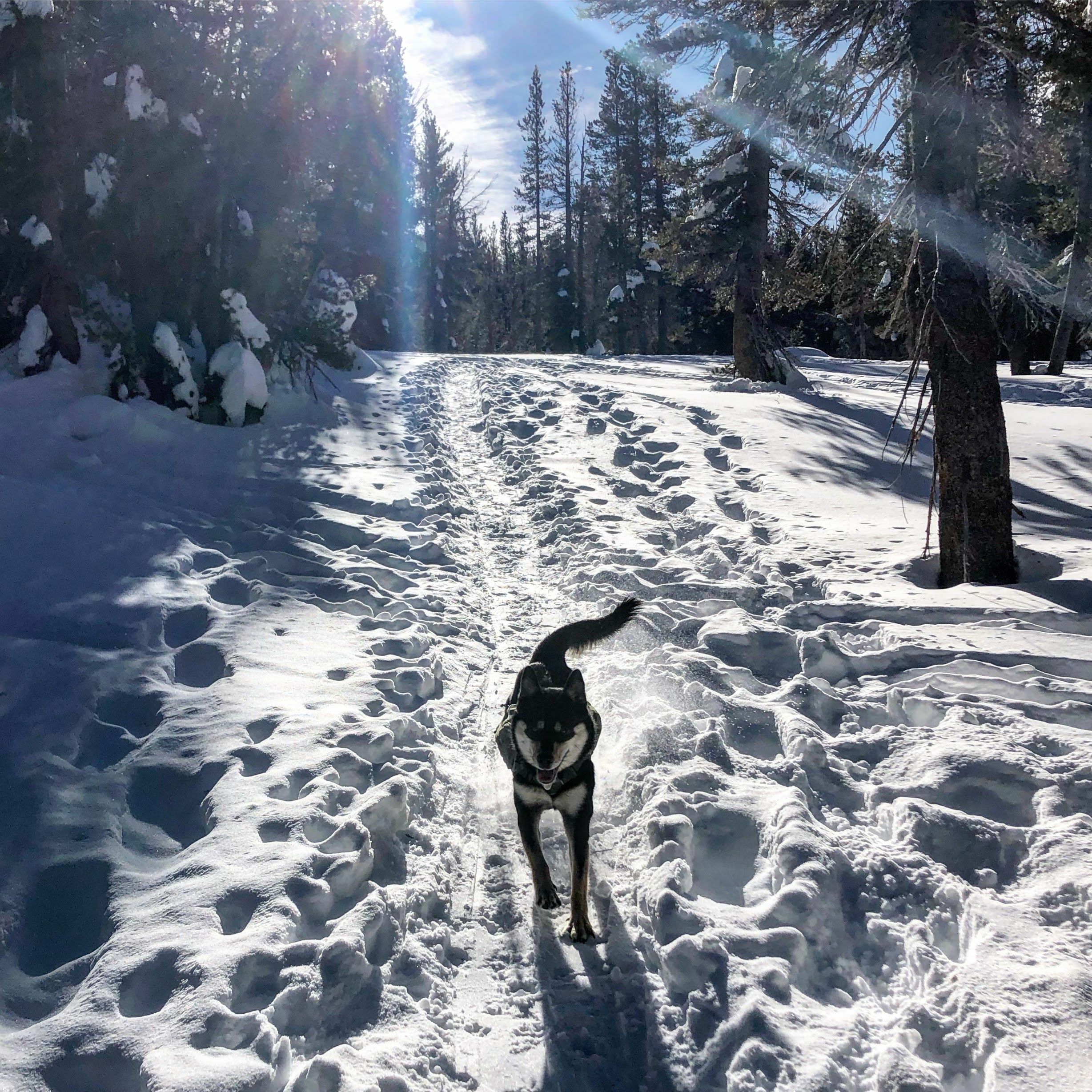
Essential Gear
In addition to a first-aid kit and the obligatory avalanche rescue gear that all backcountry skiers should carry (and know how to use!), there are a few dog-specific items that I feel are essential to a safe day in the snow. This isn’t an exhaustive list, but rather I’ve called out what I believe is most important:
- Musher’s Secret is a natural, food-grade wax that forms a breathable protective barrier for your dog’s paws. This has been a game changer for both winter and summer adventures, allowing Lily to run for miles without tearing up her paws.
- Emergency dog carrying harness. It’s a packable, lightweight rescue sling that allows you to carry your dog on your back in the event of an emergency. Exhaustion, injured paw, or broken bone are just a few examples of what can ocurr, and it’s important to always consider whether you’d be able to carry your dog all the way back to the trailhead if something were to happen. This is an item I've thankfully not had to use, but I always make sure to throw it in the pack.
- Water and snacks! This may seem obvious, but I’d be remiss not to call it out. Don’t forget to pack a water bowl, extra water, and snacks to make sure all humans and animals are hydrated and well-fueled throughout your day.
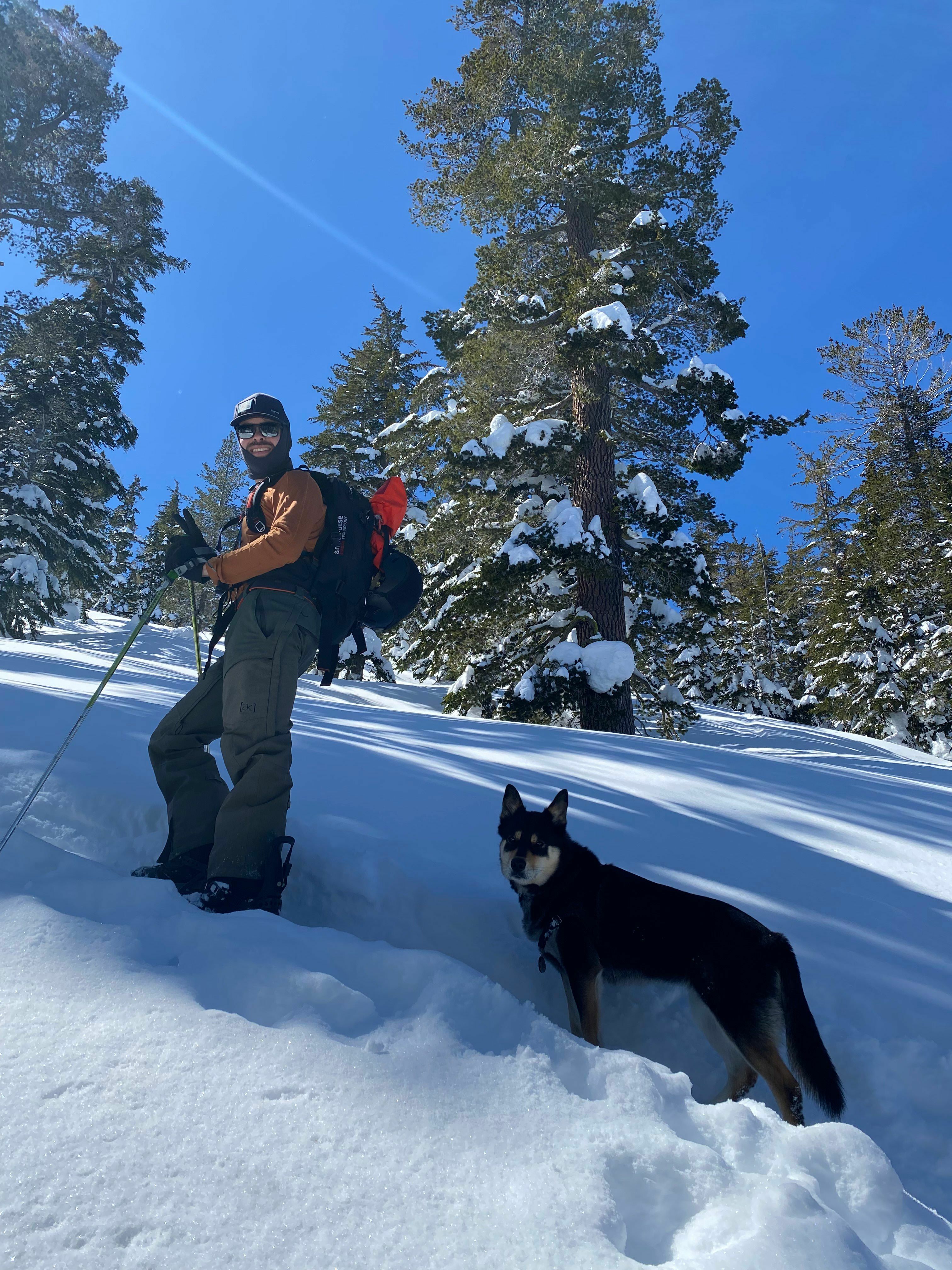
Start slow, work your way up
The best way to build trust in your dog's abilities in the backcountry is to start off with a mellow route. Take it slow and monitor how your pup is doing. Are they getting cold? How are their paws holding up? How quickly do they start to show signs of fatigue? Starting slow and working your way up to longer tours is the best way to ensure you don’t get in over your head.
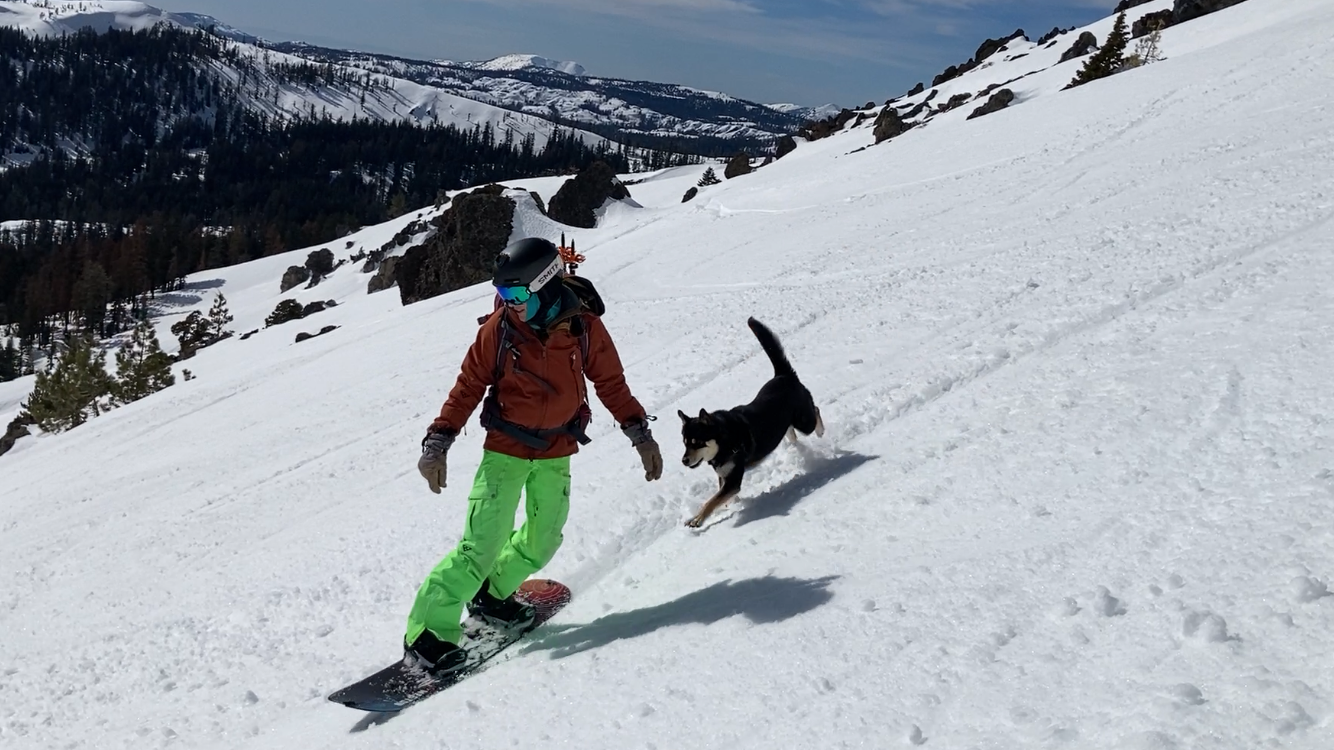
Sometimes it’s best for your dog to stay home
As difficult as it may be to leave your dog behind, you must consider if the conditions and route you’re planning are suitable for your furry friend. Be sure to check out FATMAP by Strava, a fantastic tool for adventure planning and navigating. Deep heavy snow can be exhausting for dogs after several miles, and a hard, icy, snowpack can lead to bleeding paws. If your heart is set on a long tour with thousands of feet of vertical climbing in tricky snow conditions, it might be best for your pup to sit this one out. 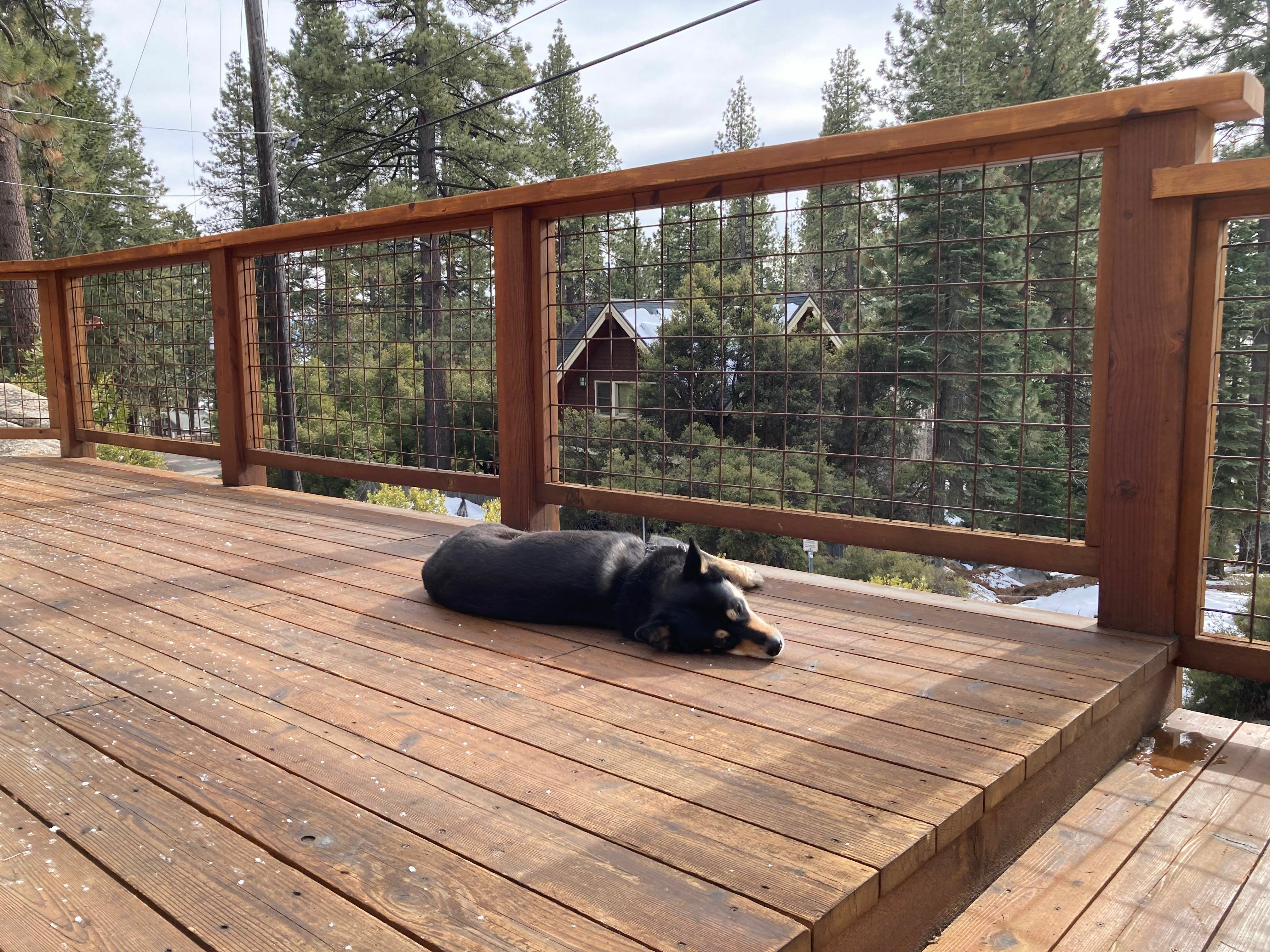
And now the moment you've been waiting for...
Have you taken your snow-loving dog into the backcountry? Do you do other outdoor Strava adventures with your dog? Any other advice that I may have left out? Let's chat about it in the comments below!




